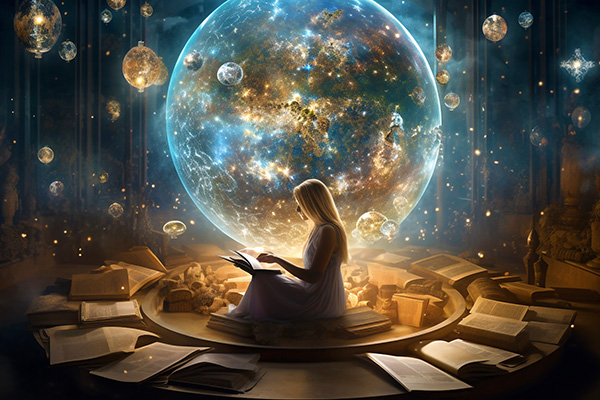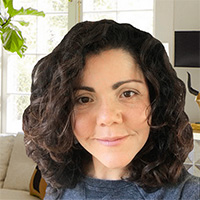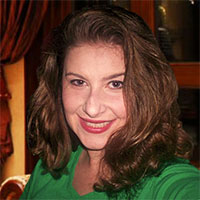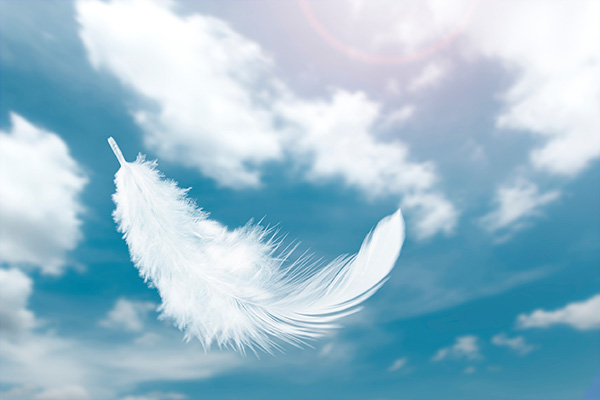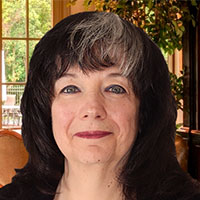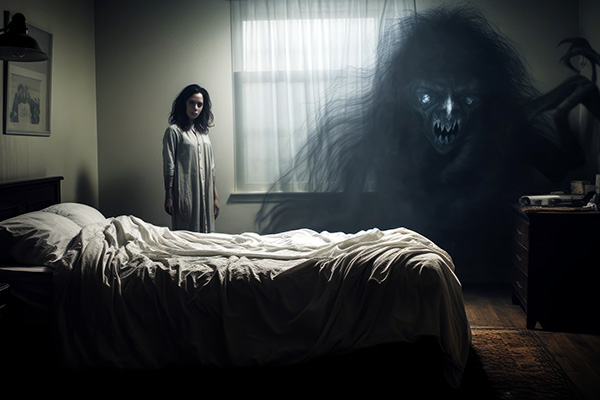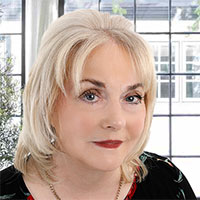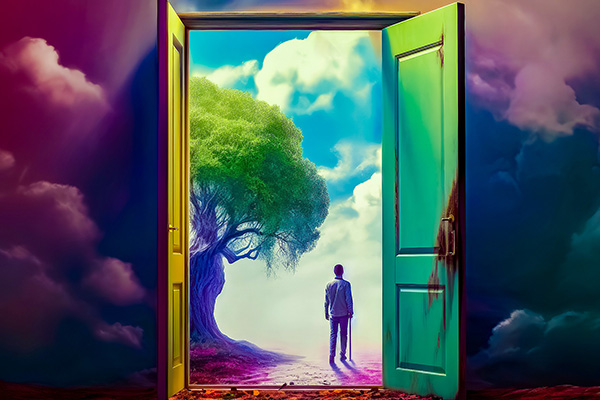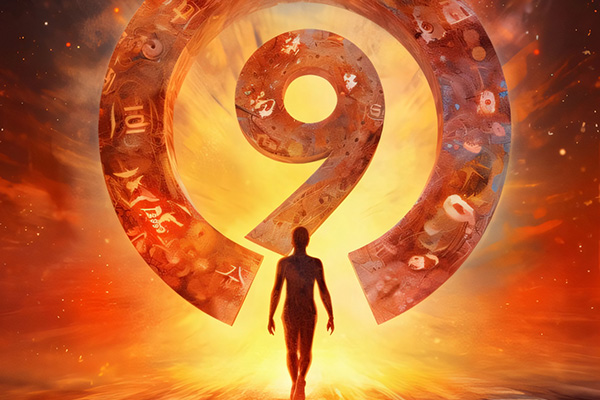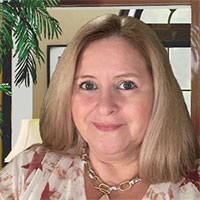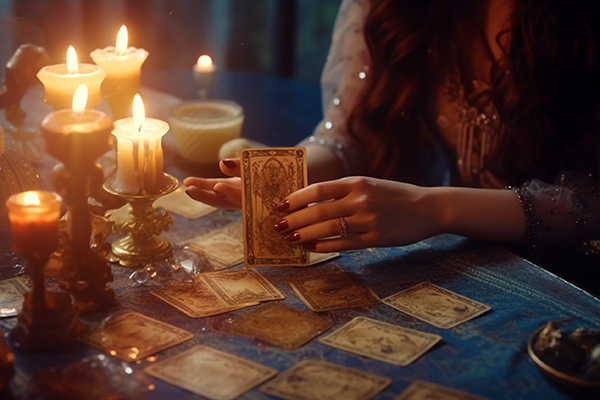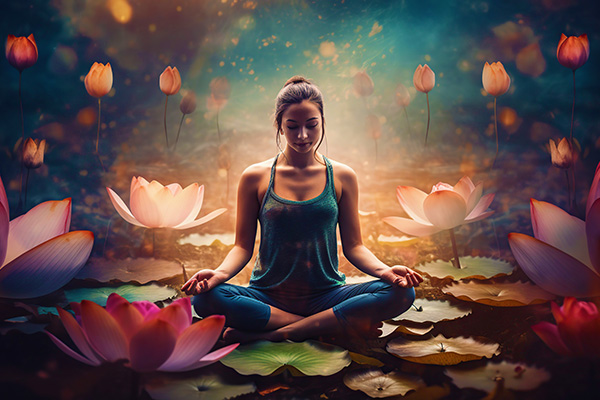How to Change Your Origin Narrative and Conquer Life Challenges
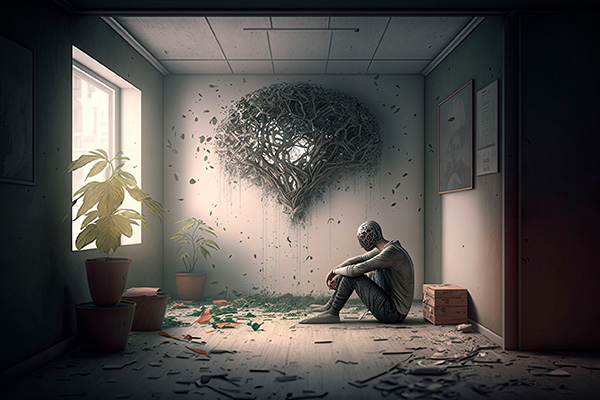 Do you ever feel as if your life experiences are stuck in a loop, no matter how hard you try? Are you repeating the same scenarios repeatedly but with different people involved? Or perhaps with the same people yet continuously confronting the same issues without any resolution? If this resonates with you, it may be time to revisit your foundation story.
Do you ever feel as if your life experiences are stuck in a loop, no matter how hard you try? Are you repeating the same scenarios repeatedly but with different people involved? Or perhaps with the same people yet continuously confronting the same issues without any resolution? If this resonates with you, it may be time to revisit your foundation story.
Each of us possesses an origin tale. It consists of ingrained beliefs and concepts that influence how we perceive ourselves and our role in the world. It is a narrative we frequently recount when describing ourselves or reflecting on our life events. Internally, it serves as a means for self-definition, while externally, it is used to represent ourselves to others.
Your origin tale is born from family influences, formative life experiences, and the perceptions you developed about yourself as you matured. While it helps to clarify who we are, it can also act as a confinement, restricting our development and leading to repetitive unsatisfactory outcomes.
In my practice as a psychic consultant, I often observe in readings that individuals are constrained by their origin tales without even recognizing it. When we cling too tightly to our self-imposed narratives, we find ourselves ensnared in cycles that hinder our evolution into the person we genuinely aspire to be.
An origin story differs from a limiting belief significantly; it shapes our identity and personality—who we are and who we wish to be in the world. Recognizing and dismantling it can be more complex, as it is a core element of our identity. Nonetheless, it shares a similarity with limiting beliefs in that exploring and becoming aware of it is crucial since it can hinder our progress and create deeply unsatisfying life experiences.
There are moments in our lives when we must acknowledge that our past remains precisely what it is, immutable. However, we can alter the narrative we tell ourselves about it, and in doing so, we can transform the future ~ Eleanor Brow
Recognizing Your Origin Story
Before you can enhance your origin story by embracing a fresh, more uplifting perspective, you must first pinpoint the central narrative and components of your origin tale.
Begin by reflecting on the stories you frequently share about yourself and your life. Also, enhance your self-awareness when introducing yourself to others. Which narratives tend to recur? What details do you consistently present first? How do you define your identity to a newcomer? What anecdotes, views, and humor do you typically share in social encounters?
Observe the attitudes, mindsets, and beliefs you express regarding yourself, your capabilities, and your challenges and constraints. For instance, you might often say, “I’ve never excelled at managing finances,” or “I struggle immensely with relationships,” or “I have eternally battled health issues.”
These types of statements often provide significant insights into the fundamental aspects of your origin story, generally shaped by your family’s perspectives on success, affection, and self-worth, along with your initial experiences in educational, social, and spiritual environments.
Reflect on your childhood. Which negative or constraining self-perceptions did you absorb from your family? How were emotions, failures, or successes managed in your household? Were you encouraged to pursue your ambitions, or were certain paths deemed unrealistic? Did you feel supported, or was proving yourself a frequent necessity? These early influences form the foundation of our origin story, frequently manifesting as patterns that we unconsciously repeat throughout our lives.
Additionally, ponder the decisions you made about your identity in reaction to these early influences. For example, if you faced criticism or neglect as a child, you might have concluded that you were unworthy of love, resulting in a cycle of unfulfilling relationships. Alternatively, if you learned that financial success must come through struggle, you may find yourself ensnared in patterns of financial uncertainty.
In this universe, amid the duality of existence and identity, the narratives we choose shape the possibilities of our reality. We are the tales we tell ourselves ~ Shekhar Kapur
Transforming Your Origin Story
After recognizing the elements and origins of your origin story, the subsequent step is to transform it. You need to transmute or change these limiting elements into something more empowering and positive.
Transmutation is a profound spiritual process that shifts not only a belief but also its energy and overall effect. It requires transforming the limiting, negative, or outdated components of your origin story into sources of strength, wisdom, or liberation. Rather than merely dismissing your previous story, you reframe it, uncovering new meanings and transforming earlier challenges into growth opportunities.
For instance, if your origin story is colored by feelings of inadequacy stemming from past shortcomings, reshaping it might involve viewing those failures as lessons that bolstered your resilience and capability. This transformation process involves recognizing the influence of your former narrative on your life and deliberately reshaping it into something that bolsters your aspirations, growth, and well-being.
This process entails understanding that the narrative you’ve followed is not fixed. You hold the authority to modify your tale and craft new outcomes.
Commence by disputing the beliefs that no longer benefit you. Ask yourself, “Is this genuinely true?” or “Where did this belief originate?” By interrogating these narratives, you begin to loosen their grip on your life. For instance, if you’ve always thought that success necessitates hardship, question whether there is evidence that success can be attained easily by others—and why it can’t be for you.
Visualization and affirmations serve as potent tools for rewriting your story. Visualize yourself leading a life that aligns with the new convictions you aspire to adopt. Affirmations like “I am deserving of love and abundance” assist in reprogramming your subconscious and replacing outdated patterns with new, empowering ones.
It is likewise vital to uncover your soul’s purpose and life’s calling, as this process shifts our focus from past limitations to future opportunities. By connecting with our soul plans and karmic aspirations, we can redefine our life narratives to align with what genuinely resonates with our true selves.
As we do this, we come to realize that our early life events, even those that were the most challenging and traumatic, have prepared us to fulfill our soul’s mission. When we embrace our purpose, we convert the beliefs that once restrained us into a tale of empowerment, resilience, and growth, enabling us to confidently embrace our potential and create a life that reflects our authentic essence.
If you’re unclear about your soul’s purpose, engage in spiritual practices that can assist in discovering your soul plan and mission, such as regular meditation, dreamwork, prayer, divination, journaling, and psychic consultations. Collaborating with a reputable psychic can clarify your strengths, challenges, and prospective pathways. Particularly, mediumship, akashic readings, and past life explorations can unveil aspects of your life journey and soul plan that may still lie outside your conscious awareness.
Moreover, surround yourself with individuals and environments that reinforce the new narrative you wish to construct. Seek communities that nurture your growth and distance yourself from influences that tether you to the old story. Positive reinforcement from others can solidify your new beliefs and offer the confidence to align your actions with them.
Transmuting your origin tale is an ongoing journey that commences with self-awareness. By identifying the limiting beliefs from your past and opting to rewrite them, you set the stage for a new, empowering narrative that allows for greater freedom, success, and fulfillment. This shift in perspective can transform not only your self-perception but also your engagement with the world, breaking cycles of stagnation and opening avenues to new possibilities.
You own your life story. It’s the narrative you share about yourself. It holds as much truth as any other. If you repetitively tell yourself a story, no matter how improbable it seems at first, eventually the narrative will manifest itself ~ Harold R. Johnson
The Origin Story Of Indigo
To simply illustrate how subtle and all-encompassing origin stories can be, reflect on the instance of my cat, Indigo. He recently faced a health crisis that necessitated an urgent vet visit and subsequent hospitalization. When another pet owner inquired about him while waiting, I immediately launched into the narrative of how he was an ailing foster kitten that the rescue center had given up on.
Indigo was so timid and wild as a kitten that he was considered unadoptable since nobody would reconsider him. The rescue team secretly hoped for a swift adoption while he was still small and adorable, hoping people would overlook his shy and nearly feral behavior.
As I recounted this story, which I had shared countless times before, a spirit suddenly prompted me to recognize what I was doing. I understood that while the rescue workers’ comments about him were accurate at the moment, they were no longer relevant or necessary. My guides highlighted that his origin narrative required updating, and it was essential to do so, as clinging to that negative, skeptical beginning was adversely impacting both his health and my own well-being.
To revise his origin tale, I needed to question it to discover a more supportive and accurate way to define Indigo. Although he had a difficult start, the subsequent reality was that he found a loving home that recognized and embraced his true abilities and loved him for who he is.
In a similar fashion, you can scrutinize, deconstruct, and reconstruct your own origin stories. This process significantly alters how we interact with the world and creates ripple effects throughout our manifested existence, attracting experiences and people that are more aligned with who we genuinely are in the present and who we are evolving into as we advance into the future.
|
Megan possesses extraordinary gifts from birth, experiencing dreams and premonitions from a young age. She has participated in daily mentorship from Guides, Archangels, Ascended Masters, and the Ashtar Command for 30 years. Since 1993, Megan has been offering honest and compassionate readings and healing services, starting with friends and family and transitioning to a professional practice in 2006. She is certified in various psychic and healing techniques, including Reiki and Angel Work, and specializes in relationship readings, providing detailed insights on relationship longevity, partner honesty, and future intentions. Megan has successfully served clients across the globe. She is deeply appreciative of her client’s loyalty and boasts a long list of devoted clients, some of whom have worked with her since her practice commenced. To experience a transformative psychic reading with Megan, contact her today at PsychicAccess.com |
How to Transform Your Origin Story and Overcome Life Obstacles
Life is a journey filled with obstacles and challenges. Each person has a distinct origin story that shapes their identity and worldview. Yet, sometimes this origin narrative can act as a barrier, preventing us from achieving our full potential. Fortunately, with the right mindset and approach, we can reshape our origin story and navigate life’s hurdles.
1. Recognize and embrace your origin story:
The initial step in transforming your origin story is to recognize and accept it. Grasp that your past events have contributed to who you are but do not define you. Embrace your story—including both triumphs and challenges—as they have shaped you.
2. Reframe your narrative:
Once you’ve accepted your origin story, it’s essential to reframe it. Rather than seeing your past as a burden, view it as a source of strength and resilience. Concentrate on the lessons learned and personal growth gained from overcoming obstacles. By reframing your narrative, you can alter your perspective and empower yourself to tackle future challenges.
3. Identify limiting beliefs:
Often, our origin story gives rise to limiting beliefs. These beliefs may hinder our ability to take risks and chase our dreams. Dedicate time to identify negative beliefs linked to your origin story. Reflect on whether these beliefs benefit you or obstruct your progress. Challenge these beliefs and replace them with positive affirmations that resonate with your goals and aspirations.
4. Seek support and guidance:
Altering your origin story and overcoming life obstacles can be overwhelming. It’s crucial to seek support from trusted friends, family, or professionals. Surround yourself with people who believe in your potential and can offer encouragement and advice. Consider seeking therapy or coaching to aid in navigating challenges and developing effective strategies for personal growth.
5. Set realistic goals:
To overcome life’s hurdles, it’s vital to set pragmatic goals. Break down your larger aspirations into smaller, manageable steps. By establishing realistic goals, you can gain momentum and feel accomplished along the way. Celebrate every milestone reached, as it fuels your motivation to progress.
6. Foster resilience and adaptability:
Life is inherently unpredictable, and obstacles will arise. Cultivate resilience and adaptability as essential traits for overcoming challenges. Recognize that setbacks are a natural part of the journey and view them as avenues for growth. Learn from failures, refine your approach, and continue moving forward.
7. Prioritize self-care and self-compassion:
Transforming your origin story and overcoming life’s hurdles can be emotionally taxing. It’s crucial to prioritize self-care and self-compassion throughout this journey. Take breaks, engage in activities that bring joy, and be compassionate with yourself during setbacks. Treat yourself with the same kindness and understanding you would afford a dear friend.
In summary, reassessing your origin story and surmounting life obstacles is a journey that demands self-reflection, resilience, and support. By recognizing and accepting your past, reframing your narrative, identifying limiting beliefs, seeking support, setting realistic goals, embracing resilience, and prioritizing self-care, you can navigate any challenge. Remember, your origin story does not define you; it merely serves as the foundation for your exceptional journey towards personal growth and success. Continue reading


